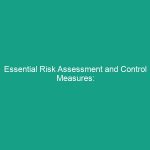Good Morning Team!
Today, we’re going to talk about an important topic that impacts our daily operations and overall Safety—Essential Guidelines for Safely Working Alongside Subcontractors. It’s crucial that we all understand how to work safely with subcontractors to ensure a safe and productive work Environment for everyone involved.
Understanding Essential Guidelines for Safely Working Alongside Subcontractors
So, what do we mean by “essential guidelines for safely working alongside subcontractors”? This phrase encompasses the protocols, practices, and considerations that ensure Safety when multiple teams—our own and subcontracted—collaborate on a project. This is vital not only for maintaining safety but also for enhancing efficiency and productivity on the job site.
Many employees might assume that subcontractors operate independently and that their safety practices are not our concern. However, this is a misconception. Poor safety practices by subcontractors can directly affect all on-site workers, including our own team. Thus, understanding these guidelines is integral to our collective safety.
Key Hazards, Risks, and Safety Considerations
When working alongside subcontractors, we need to identify specific Hazards and risks that may arise, such as:
- Communication Breakdowns: Misunderstandings regarding roles and responsibilities can lead to accidents.
- Inconsistent Safety Practices: Different safety protocols can create confusion and hazards.
- Inadequate Training: Subcontractors may not be familiar with site-specific hazards.
- Equipment Use: Improper use of equipment by subcontractors can lead to accidents and injuries.
Ignoring these risks can have severe consequences, including accidents that result in injuries or even fatalities. It’s crucial to be proactive in recognizing and mitigating these hazards.
Best Practices, Procedures, & Actionable Advice
To ensure a safe working environment when subcontractors are involved, follow these essential Best Practices:
1. Pre-Job Safety Meetings
Before beginning any project, hold a pre-job safety meeting with all teams involved. Discuss specific site hazards, safety protocols, and expectations. During these meetings, emphasize the importance of open communication.
2. Documentation and Compliance
Ensure that all subcontractors provide proof of their safety training and certifications. Familiarize yourself with their safety protocols and ensure they align with ours. Review OSHA Standards and other relevant Regulations to ensure compliance.
3. Clear Communication Channels
Establish clear communication channels. Use tools like radios, hand signals, or regular check-ins to ensure everyone is on the same page. Encourage subcontractors to voice concerns or report hazards immediately.
4. Site Inductions
Before starting any work, conduct a site induction for all subcontractors. This should cover emergency Procedures, site-specific hazards, and the location of safety equipment.
5. Regular Safety Inspections
Conduct regular safety inspections to ensure compliance with safety practices. Address any concerns immediately, and document all findings. This not only promotes safety but also fosters accountability.
6. Encourage Reporting
Encourage all workers, including subcontractors, to report unsafe conditions or near misses. This should be a non-punitive process that focuses on improving safety for everyone.
Real-Life Case Study
Let’s consider a real-world example. On a construction site, a subcontractor was not following the established safety protocols for scaffolding. This led to a near-miss incident where a worker almost fell. After this incident, a thorough review of safety practices was conducted, resulting in a collaborative safety meeting that brought teams together to align on safety standards. This incident highlighted the importance of being proactive and ensuring all teams are on the same page.
Regulations, Standards, and Compliance
Understanding and adhering to safety regulations is critical. The Occupational Safety and Health Administration (osha) provides guidelines that must be followed by all contractors and subcontractors. Familiarize yourself with:
- OSHA standards related to your specific industry.
- Your company’s internal safety policies and procedures.
- Any specific regulations that pertain to subcontractor work.
Compliance not only protects employees but also shields the company from legal liabilities. It’s essential that everyone understands the regulations and their roles in maintaining compliance.
Employee Engagement & Discussion
Now, I’d like to open the floor for discussion. Think about your experiences working with subcontractors:
- What safety challenges have you encountered related to this?
- How can we improve our communication with subcontractors?
- Do you have suggestions for enhancing our safety practices?
Engaging in these conversations helps us identify areas for improvement and reinforces our commitment to safety.
Conclusion & Key Takeaways
In summary, working safely alongside subcontractors requires clear communication, adherence to safety protocols, and a commitment to compliance. Remember, safety is a shared responsibility, and we all play a role in creating a safe work environment.
Let’s prioritize these essential guidelines and ensure we all return home safely at the end of each day. Thank you for your attention and commitment to safety. Together, we can make our workplace a safer place for everyone!


